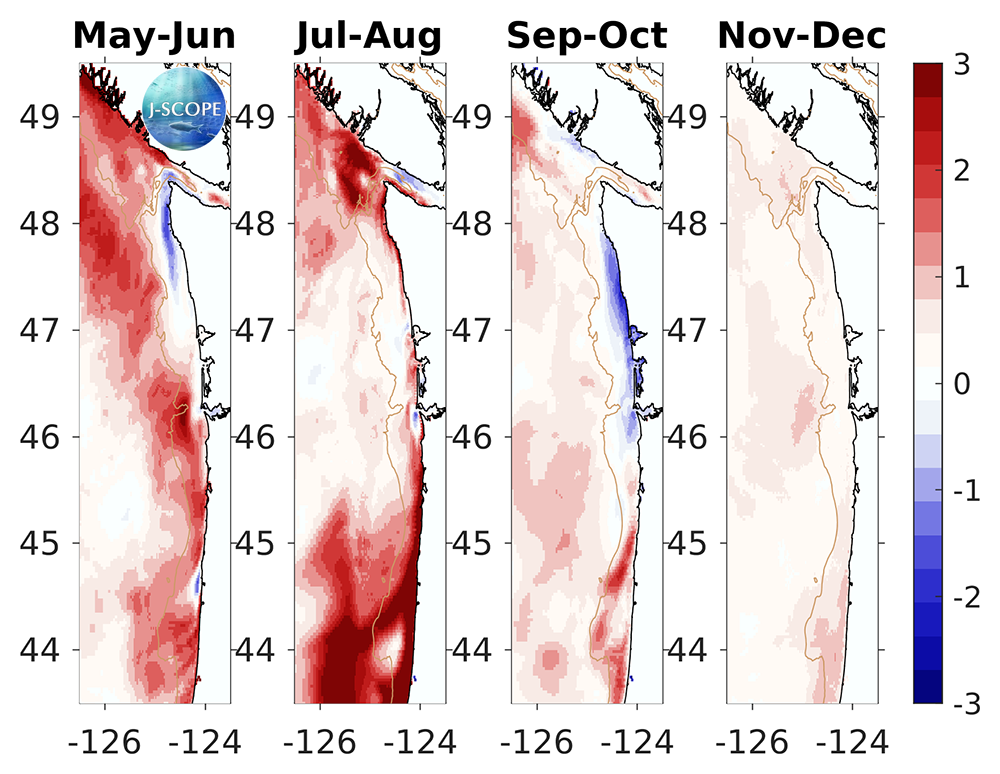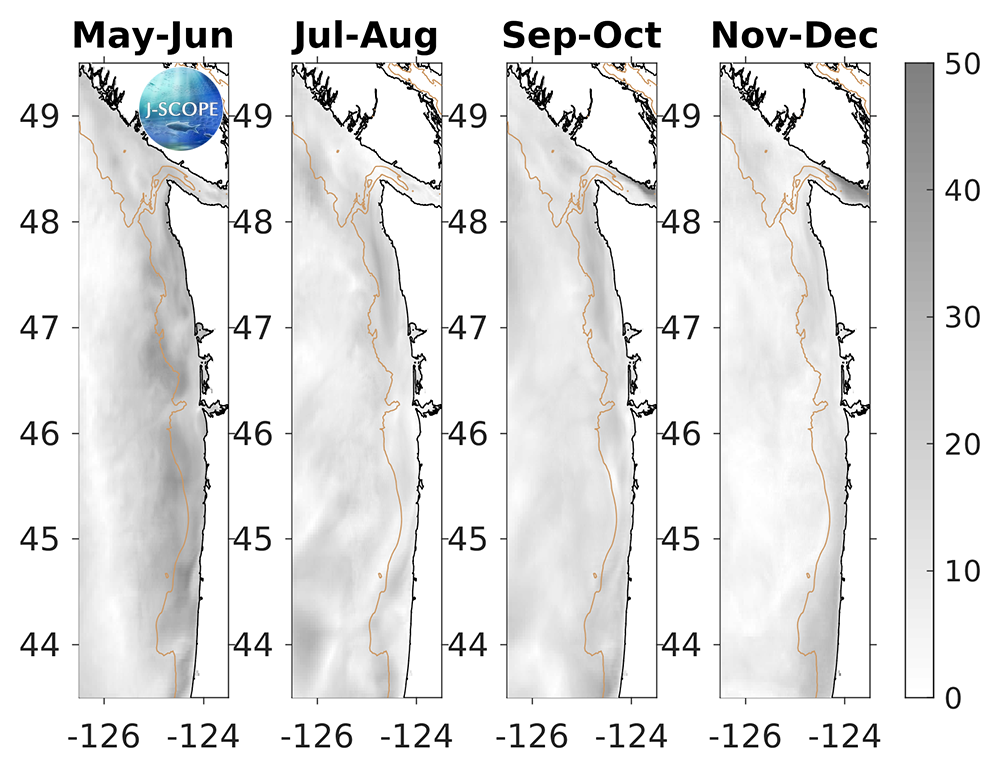Forecast Origin Dates
J-SCOPE forecast results for the model run beginning in April of 2020 are shown in the first figure. Each panel represents ensemble averaged anomalies of two month averages for the region. The panels directly under the anomaly plots depict the relative uncertainty from the ensemble for the same time periods.
For waters off the Washington and Oregon coast, the forecast projects that 10-meter integrated chlorophyll will be higher than climatology in Washington offshore waters and Oregon shelf waters, near climatology in Oregon offshore waters, and slightly lower than climatology on the northern Washington shelf near the mouth of the Strait of Juan de Fuca during the early upwelling season (May - June). Later in the upwelling season (July - August), patches of higher than climatology chlorophyll persist and strengthen at the northern and southern extents of the model domain, while conditions approach climatology over most of the domain. The relative uncertainty is highest on the outer shelf in May - June, but then decreases slightly for the remainder of the upwelling season when the uncertainty is low (<20%; July - August).
The uncertainty is caused by the differences between the three ensemble members. One way of looking at the physical differences in the models is to see the spread in the wind forcing, see California Current Indicators. The ensemble members disagree the most in the beginning of the forecast and the fall.

The anomaly of the modeled region chlorophyll values integrated over the surface 10 meters (in mg/l), and averaged over all three ensemble members and in time for (from left to right) May - June, July - August, September - October, November - December.

The relative uncertainty in percent for the modeled region chlorophyll values integrated over the surface 10 meters, and averaged in time for (from left to right) May - June, July - August, September - October, November - December. The relative uncertainty is defined as the standard deviation of the ensemble divided by the mean of the ensemble and is reported as a percentage of the mean.








